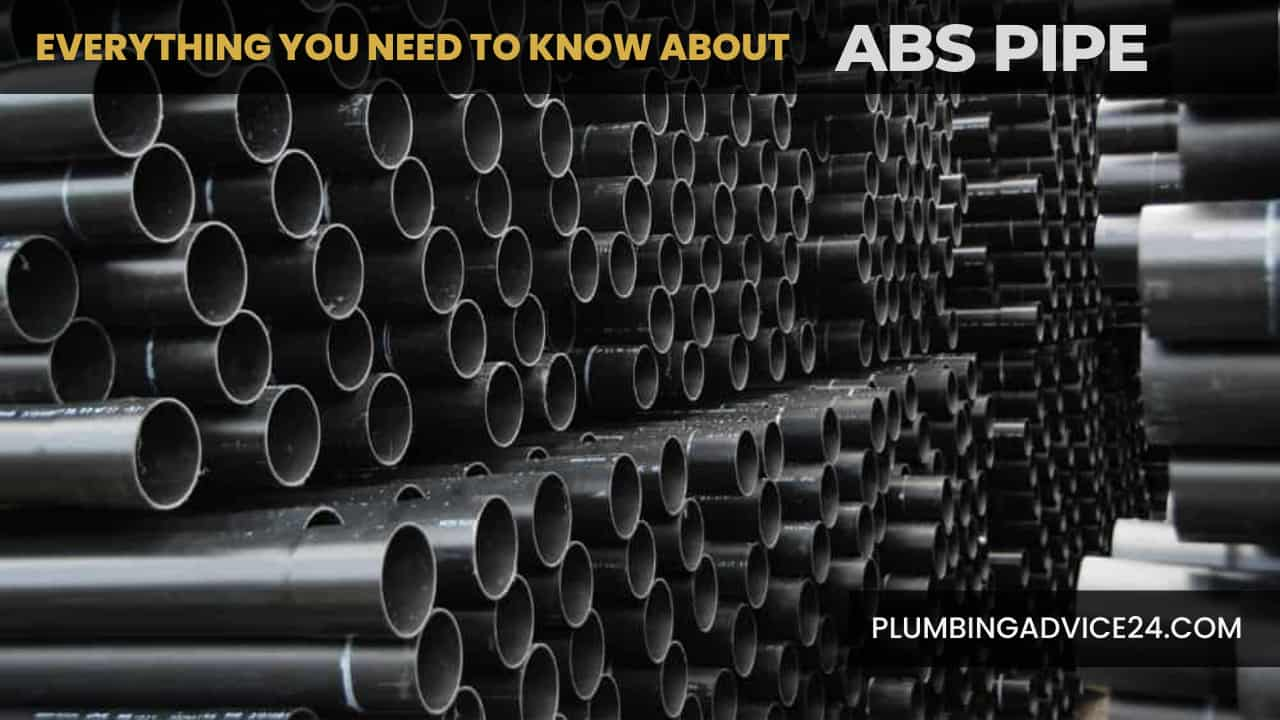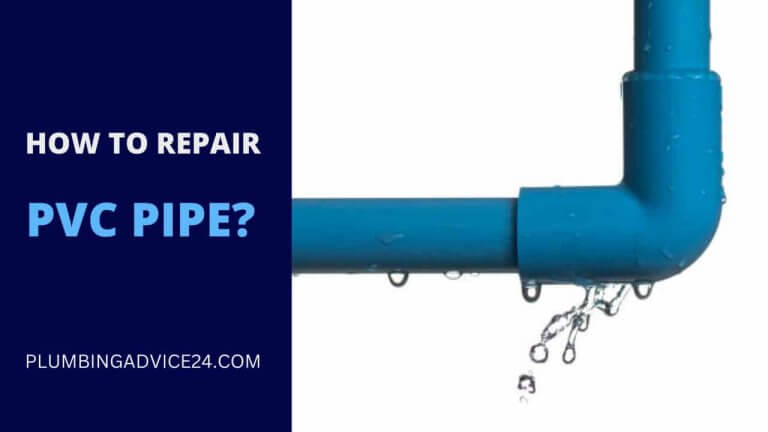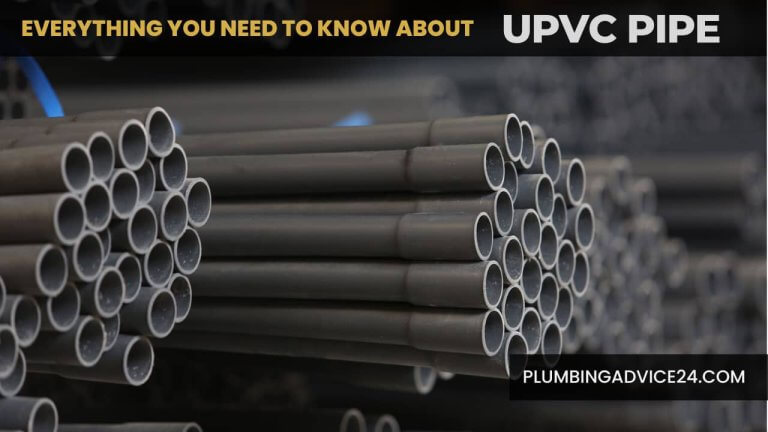What Is ABS Pipe | Why Is ABS Pipe Prohibited | How to Measure ABS Pipe | ABS Pipe Installation Cost
If you are going to install a new plumbing system in your home, you need to know about ABS plumbing pipes. ABS pipe is similar to PVC pipe but is much softer and stronger. These types of plumbing pipes are mainly used in drain and vent applications. It is best used underground and in cold temperatures.
However, some building codes prohibit ABS pipes. So if you are going to install ABS pipes, you should read this article. We will give information about what ABS pipes are, why they are prohibited, how long their lifespan is, where they can be used, how they can be measured, what is the price of ABS pipes, their advantages, and disadvantages, etc.
What Is ABS Pipe?
ABS, or acrylonitrile butadiene styrene pipe, is a rigid black, non-pressurized plastic pipe. It is used to drain sinks, tubs, showers, toilets, and washing machines. It is also often called an ABS drain or ABS waste pipe.
ABS pipes are mainly used underground and in areas with cold temperatures, as they can become deformed if exposed to direct sunlight. ABS pipes are often installed outdoors by painting them with water-based latex paint and protecting them from the sun’s ultraviolet rays.
Since ABS pipes transmit flowing water flow, they do not fall into the category of quiet pipes.
Must Read : What is Cast Iron Pipe | How to Repair Cast Iron Pipe | Cast Iron Pipe Replacement Cost
Why Is ABS Pipe Prohibited?
ABS pipes have a lower melting point than other plastic pipes such as PVC (polyvinyl chloride). In a fire situation, ABS pipes can emit soft, distorted, and toxic fumes. This can pose a hazard to building occupants and emergency responders. On the other hand, PVC pipes have better fire resistance properties.
Additionally, ABS pipes are made using a mixture of acrylonitrile, butadiene, and styrene. Styrene, in particular, has been associated with environmental concerns and health hazards. It can potentially leach into water supplies or soil, posing a threat to ecosystems. As a result, some jurisdictions have restricted or banned the use of ABS pipes in favor of more environmentally friendly alternatives.
Many homes still have ABS pipes serving as drain and sewer lines. Unless there is a problem with these pipes, there is no need to replace them with other pipes. If there is any problem with ABS pipes, you should replace them with PVC pipes.
You can contact your city or county agency to find out if the use of ABS pipes is prohibited in your area or not.
ABS Pipe lifespan
In the 1930s, when the plastic pipe was introduced to the market, acrylonitrile butadiene styrene (ABS) pipe was the first residential plastic pipe to appear on the market.
ABS pipes can be used for both indoor and outdoor plumbing. It is the most suitable pipe for sewer, waste, and vent applications. The life expectancy of ABS pipes is generally considered to be around 50 years.
What Is ABS Pipe Used for?
ABS pipe contains BPA, which is why its use for potable water lines is avoided. BPA is a type of chemical that can harm the health of humans and animals.
ABS pipe cannot muffle water noise. But, it is strong piping and can withstand big shocks. And as it can control extreme cold, it is considered best to use it underground. ABS piping is bonded with special cement, a one-step process that makes it cost-effective.
ABS pipes are used in a sewer, waste, vent applications, and electrical wiring. These pipes are mainly used for draining sinks, tubs, showers, toilets, and washing machines.
How to Measure ABS Pipe Size?
Measuring the diameter of an ABS pipe is easy; however, be careful that you are measuring the correct diameter with the correct unit. Whether you’re reinstalling a fitting or more pipe, choosing the right size is essential.
The ABS pipe is measured at the outside diameter. If the pipe has a heavy pressure rating and the pipe wall is very thick, the outside diameter will always be the same. The pressure rating of the pipe does not matter.
The outside diameter always remains the same, but as the pipe wall gets thicker, the inside diameter of the pipe gets smaller.
ABS Pipe Size Chart:
Below is the ABS pipe size chart, which will be helpful for its outside diameter and wall thickness:
| Size
Nominal |
Outside Diameter | Wall Thickness | ||||
| Pressure Rating | ||||||
| 6 Bar | 9 Bar | 12 Bar | 15 Bar | 12 Bar | ||
| Class B | Class C | Class D | Class E | Class T | ||
| mm | mm | mm | mm | mm | mm | |
| 3/8 | 17.3 | 1.8 | 3.6 | |||
| 1/2 | 21.5 | 2.1 | 3.7 | |||
| 3/4 | 26.9 | 2.6 | 3.7 | |||
| 1 | 33.7 | 2.1 | 2.7 | 3.3 | 4.5 | |
| 1 1/4 | 42.4 | 2.6 | 3.4 | 4.1 | 5.5 | |
| 1 1/2 | 48.4 | 3 | 3.9 | 4.7 | 6.2 | |
| 2 | 60.5 | 3.7 | 4.9 | 5.8 | 7.4 | |
| 2 1/2 | 75.3 | |||||
| 3 | 89.1 | 5.3 | 6.9 | 8.5 | ||
| 4 | 114.5 | 6.9 | 8.9 | 10.9 | ||
| 5 | 140.4 | |||||
| 6 | 168.5 | 6.4 | 10.4 | 13.3 | ||
| 8 | 219.4 | 8.8 | 13.2 | |||
ABS Pipe Cost
ABS pipes look like black PVC piping, costing about the same. However, it is slightly stronger than PVC, making it ideal for underground use. Since it leaches BPA, it is used only in drainage systems.
ABS pipes are prohibited in some areas, but if you can use ABS (for limited purposes), it can be more cost-effective than other types of pipes.
In general, ABS plumbing projects cost approximately between $3 and $6 per square foot.
Must Read : Difference Between ABS and PVC | How to Connect ABS to PVC Pipe | Which is Better ABS or PVC Pipe
Advantages of ABS Pipe
- ABS pipes require only one step to join, allowing for quick installation.
- ABS pipes are strong and shock resistant, making them suitable for drains, waste, and sewer lines.
- ABS pipes are suitable for underground applications due to their low melting point and corrosion resistance.
- Since ABS pipes are electrically conductive, it is also used to insulate electric wires.
- ABS pipes are environmentally friendly pipes as they can be recycled.
Disadvantages Of ABS Pipe
- ABS pipes contain BPA, which makes them unsuitable for use in potable water lines. BPA is a chemical that harms the health of animals and humans.
- ABS pipes cannot resist the sun’s ultraviolet rays, so they become deformed when exposed to direct sunlight.
- ABS pipes transmit flowing water flow, so they do not fall into the category of silent pipes.
- ABS pipes are fatigue-resistant and poorly solvent.
- When burned, ABS materials produce high levels of smoke, which can cause concern about air pollution.
- ABS pipes are prohibited in some areas. So it can be used only after knowing whether its use is prohibited in your area or not before installing it.
What Does ABS Pipe Stand For?
ABS pipe stands for a thermoplastic resin called acrylonitrile-butadiene-styrene. It is a rigid black, non-pressurized plastic pipe. It is used to drain sinks, tubs, showers, toilets, and washing machines.
Why Is ABS Pipe No Longer Used?
ABS is often a “regrind” or recycled resin plastic material, which leads to problems such as fatigue and failure of ABS pipes. Due to this, it is prohibited in some areas.
What Is ABS Pipe Life Expectancy?
In the 1930s, when plastic pipe was introduced to the market, acrylonitrile butadiene styrene (ABS) pipe was the first residential plastic pipe to appear on the market. It is the most suitable pipe for sewer, waste, and vent applications. The life expectancy of ABS pipes is generally considered to be around 50 years.
Where Is ABS Pipe Used?
ABS pipe is used in the sewer, waste, vent applications, and electrical wiring. These pipes are mainly used for draining sinks, tubs, showers, toilets, and washing machines.
How Is ABS Pipe Measured?
Measuring the diameter of an ABS pipe is easy; however, be careful that you are measuring the correct diameter with the correct unit. It is measured at the outside diameter. If the pipe has a heavy pressure rating and the pipe wall is very thick, the outside diameter will always be the same. The pressure rating of the pipe does not matter.
The outside diameter always remains the same, but as the pipe wall gets thicker, the inside diameter of the pipe gets smaller.
How Much Is ABS Pipe Price?
ABS pipes are prohibited in some areas, but if you can use ABS (for limited purposes), it can be more cost-effective than other types of pipes.
In general, ABS plumbing projects are approximately priced between $3 and $6 per square foot.
What Are the Problems with ABS Plumbing Pipes?
ABS pipes have a low melting point. In a fire situation, ABS pipes can emit soft, distorted, and toxic fumes. This can pose a hazard to building occupants and emergency responders. Additionally, styrene is used in ABS pipes. Styrene, in particular, has been associated with environmental concerns and health hazards. It can potentially leach into water supplies or soil.
If You Liked This Post? So Share It with Your Friends
Suggested Articles:
- What Is Plumbing Pipe | 22 Different Types of Plumbing pipes And Their Uses
- What Is Steel Pipe | How Is Steel Pipe Made | Steel Pipe Applications | How to Measure Steel Pipe | Steel Pipe Cost
- What Is Copper Pipe | Types of Copper Pipes | Copper Pipe Cost | How to Measure Copper Pipe
- Different Types of PEX Pipe | How to Make PEX Connections
- Types of Yard Drains and Their Function
- Should I Replace My Water Heater Before It Fails?














